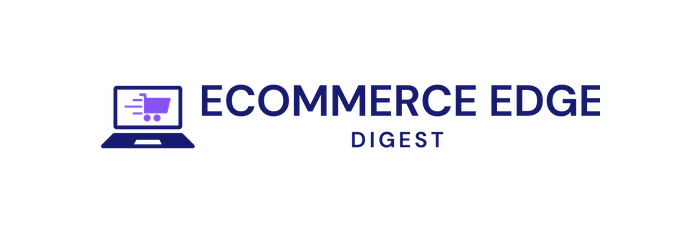
A barista suggests a larger cup. A flight booking page highlights extra legroom. A subscription screen outlines a Pro tier beside Basic. Each moment frames a choice, inviting a step up. None is accidental. They are acts of upselling: the practice of presenting a higher-value version of something a customer already wants. Upselling is often conflated with pressure or persuasion, yet at its core it’s a design problem-how to arrange options so people can see, compare, and select the version that best matches their needs. Done thoughtfully, it turns choices into value: more utility for the customer, clearer economics for the business, and a better fit between what is offered and what is used. Done poorly, it adds friction, erodes trust, and burdens decisions.
Upselling Explained: Turning Choices into Value maps this terrain. It clarifies the distinction between upselling and cross-selling, explores the psychology of tiers and anchors, and examines how pricing, packaging, and timing shape outcomes. It looks at metrics that matter-conversion, average order value, churn-and the ethics that underpin sustainable practice: transparency, consent, and relevance. From coffee counters to SaaS dashboards, it traces patterns that can scale across contexts without overwhelming the customer. the goal is not to push harder, but to design clearer choices-so that when people pay more, they get more, and everyone can see why.
Understanding When Upselling Delivers Real Customer Value and When to Refrain
Upselling earns its place when it clarifies choice and improves outcomes, not just cart totals. Think of it as a precision nudge: align the offer to the customer’s goal, context, and constraints, then make the trade-offs explicit. If the add-on lowers risk, removes friction, or measurably elevates the result, it’s value. Examples: a memory upgrade for a video-editing laptop, expedited shipping for a firm deadline, or a service plan for heavy, mission-critical use. The key is to frame the decision in terms of the customer’s job-to-be-done, using fit, timing, and transparency as your guide rails.
- Fit: The add-on directly advances the customer’s goal (faster, safer, longer-lasting, easier).
- Timing: It appears when the need is obvious (e.g., at configuration, not after checkout).
- Evidence: Clear benefits, plain language, comparable outcomes-not vague promises.
- Control: One-click opt-in/out, no pressure, no bundling that hides cost.
Hold back when the upsell competes with your core promise, introduces complexity without payoff, or exploits uncertainty. Pressure tactics, irrelevant add-ons, and overlapping protections erode trust and trigger buyer’s remorse. If the offer increases cognitive load or total cost without upgrading the experience, it’s subtraction in disguise. Respect constraints-budget, learning curve, time-and let the default be enough unless the customer’s context clearly asks for more.
- Irrelevance: The add-on doesn’t map to the customer’s use case.
- Redundancy: It duplicates features already included or easily achieved.
- Opacity: Benefits are unclear; pricing or terms feel hidden.
- Distraction: It delays completion or complicates onboarding.
| Context | Value Add | Skip |
| Deadline Delivery | Express Shipping | Gift Wrapping |
| Heavy-use Device | Extended Warranty | Decorative Case |
| Budget Starter Plan | Refurbished Tier | Premium Bundle |
Building Offer Tiers With Explicit Outcome Differences Price Logic and Add Ons
Tiers work best when the difference is the promised result, not the number of buttons. Define the shift each level delivers-bigger scope, faster time-to-value, or higher certainty-and make that transformation explicit in your copy and deliverables. Anchor pricing to those outcome deltas: the more risk removed, the more revenue created, the more time saved, the higher the justified rate. Use transparent logic customers can repeat back: what changes, by how much, and why that costs more. Treat the middle tier as the default fit, the entry tier as the frictionless start, and the top tier as the “no-compromise” path for those who value speed or guarantees above all else.
- Base Value: Price for the core outcome at a standard scope.
- Multipliers: Adjust for volume, speed, complexity, risk transfer.
- Floors/Ceilings: Minimum viable price and a cap before custom quotes.
- Breakpoints: When it’s smarter to move up a tier than stack extras.
| Tier | Primary Outcome | Price Logic | Common Add‑ons |
|---|---|---|---|
| Essential | Baseline Result | Base Value | Extra Seats, Basic Support |
| Pro | Faster + Broader Impact | Base × Speed/Volume | Integrations, Training |
| Elite | Guaranteed Outcome | Base × Risk Transfer | SLA, Concierge Setup |
Add‑ons are modular accelerants, not hidden tiers. Keep the tier promise pure, then let buyers ”tune” with extras that sharpen the same outcome: more seats for scale, integration for convenience, or a warranty for certainty. Price add‑ons using the same logic as the tiers-tie each to a clear unit of value and state the effect in plain terms (“reduce onboarding by two weeks,” “extend coverage to 99.9%”). Guard against bloat with an anti-overlap rule: if 60%+ of buyers attach the same extra, graduate it into the next tier and simplify the menu.
- Clarity Label: What it does, by how much, and who benefits.
- Stacking Rules: What combines, what conflicts, and upgrade triggers.
- Outcome Receipts: Brief metrics customers track after adding it.
- Bundle Bias: Curated packs that solve a job-to-be-done at a discount.
Conversation Cues Data Signals and Timing That Lift Acceptance Without Pressure
Upsells land best when they feel like help: meet the moment, mirror the language, and keep choices tiny. Listen for micro-affirmations (“that’s captivating”), watch posture and pacing, and offer one relevant next step-not a menu. Use “as” statements to tie the suggestion to their goal, and pause after the offer so the customer can steer. confidence comes from clarity: name the benefit, show the delta (what changes), and state the commitment in plain time or cost.
- Curiosity Clue: “How would that work?” → Offer a 1-click add-on demo.
- Problem Ping: “This part slows us down.” → Propose the tool that removes that one step.
- Progress Pride: “We’re nearly set.” → Suggest a safeguard or autopilot to protect wins.
- Budget Boundary: “We planned around X.” → Present two tiers anchored near X.
- Ownership Language: “My team will…” → Position a team bundle with handoff simplicity.
Let data do the timing: Pair behavioral signals with respectful pacing. Trigger suggestions on clear intent (usage streaks, feature discovery, capacity caps) and constrain to a short window where value is obvious. Keep the copy soft (“you can”) and reversible (trial, toggle, or downgrade path visible). When in doubt, lead with outcomes, not attributes, and show the before/after in one line.
| Signal | Right-time Nudge | Soft CTA |
|---|---|---|
| Hits 90% Storage | “Keep uploads flowing with +50GB.” | Add Space |
| Invites 3rd Teammate | “Share roles and approvals instantly.” | Enable Team |
| Exports Weekly | “Auto-schedule reports to inbox.” | Start Automation |
| High-priority Ticket | “Cut response time with Priority Care.” | Try Support+ |
Final Thoughts…
Upselling is not the art of adding more-it’s the craft of revealing the next right thing. When options are timed with care, framed with clarity, and anchored in real outcomes, the “extra” stops feeling like a push and starts feeling like progress. That shift-away from persuasion and toward alignment-is where value emerges for both sides. Keep the compass steady. Let relevance, transparency, and customer agency set the boundaries. Measure beyond the immediate bump: look at attachment quality, satisfaction, returns, and long-term retention. Small experiments, honest language, and clear comparisons will tell you which offers truly help and which merely distract. Upselling is a conversation conducted through design. If each choice respects context and autonomy, the answer can be a confident yes-or an easy no-without eroding trust. Do that consistently, and you’re not adding steps to a journey; you’re smoothing the path, turning choices into value that lasts.



 In the fast-paced world of retail, the key to success lies in the art of upselling. By strategically guiding customers towards complementary products or services, businesses can not only increase their sales revenue but also enhance the overall shopping experience. Join us as we delve into the strategies and techniques for maximizing sales through effective upselling, and discover how you can take your business to new heights.
In the fast-paced world of retail, the key to success lies in the art of upselling. By strategically guiding customers towards complementary products or services, businesses can not only increase their sales revenue but also enhance the overall shopping experience. Join us as we delve into the strategies and techniques for maximizing sales through effective upselling, and discover how you can take your business to new heights.